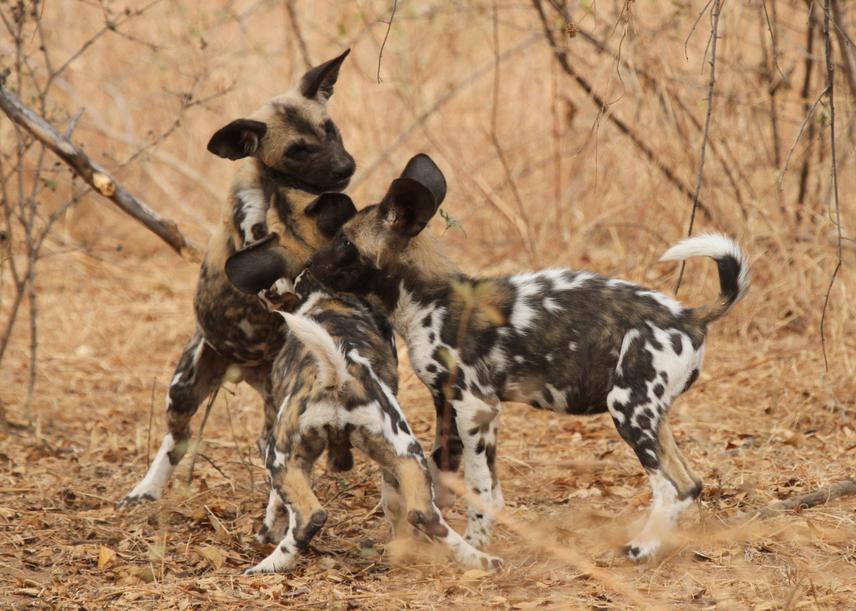Rosemary Groom
Other projects
12 Aug 2008
An Assessment of the Conservation Status of, and Threats Affecting, the Endangered African Wild Dog in the Zimbabwean Part of the Greater Limpopo Transfrontier Conservation Area
22 Feb 2010
Improving the Conservation Status of the Endangered African Wild Dog in the Zimbabwean Part of the Greater Limpopo Transfrontier Conservation Area
26 Mar 2012
Establishing a Mobile Education Unit for Rural Communities around Zimbabwe’s Savé Valley Conservancy
To enhance the conservation prospects for the endangered African wild dog in and around Gonarezhou National Park through investment in education and capacity building in neighbouring communities.

The Gonarezhou National Park (GNP) is a key part of the Greater Limpopo Transfrontier Conservation Area, which supports almost 10% of the global population of endangered African wild dogs. This unique canid is a low-density and wide ranging species, for which conservation efforts must extend beyond the boundaries of protected areas. In fact, paradoxically, because of the generally high densities of superior carnivores, particularly lions and spotted hyenas, wild dogs do not always thrive in protected areas, and a significant number are resident outside of these areas.
Because they are carnivores, wild dogs are often (mis)perceived by communities to be a threat to human life and as such tolerance is low and persecution is high. They do occasionally take livestock, and thus negatively impact human livelihoods as well. And of course the ecological benefits of wild dogs as top predators are not understood by communities, the financial benefits of wild dog tourism are not realized by communities and an appreciation of the innate value of wild dogs is not a luxury generally afforded to communities. And this is what we need to change, because it is these people that reside around the protected areas and in the corridor areas which are so critical for wild dog dispersal.
As such, in order for them to tolerate and even conserve wild dogs, it is imperative to work with communities – both with school children and adults. We aim to provide significant benefits to the schools and communities around the GNP, making a very clear link between the benefits and the wildlife resource in order to help engender more positive attitudes and change behaviour. This will be done through a combination of a schools-based program and community engagement work, including conflict mitigation awareness-raising. The schools program will include distribution of and assistance with using curricula-friendly conservation awareness materials, a literacy program, a DVD showing program and eventually a secondary school scholarship program. Experiences from and formal evaluation of a similar program around the nearby Savé Valley Conservancy, suggest that this approach can have significant positive conservation benefit.